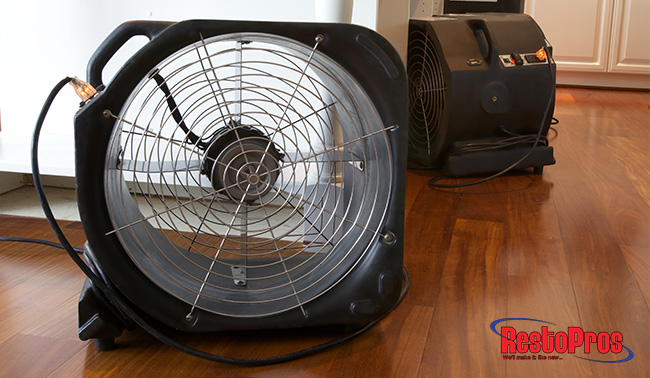
A flood damaged home can be a massive source of anxiety for homeowners and renters who face this problem due to hurricanes, heavy rain or burst pipes. A flood damaged home comes with a myriad of other issues such as figuring out the cleanup process, repairing any damage, filing a flood insurance claim, and finding a temporary place to stay if necessary. On top of that, you might end up dealing with a mold infestation that could potentially further damage your home.
Mold is a fungus that is primarily attracted to damp areas so it’s no surprise it shows up in places where there is a leakage or water damage. However, the team at RestoPros has some tips on how to prevent mold after a flooding so you don’t have to deal with another unnecessary and expensive problem.
Preventative Measures to Take Against Mold
According to the Federal Emergency Management Agency, it can take 24 hours for mold to start growing after being exposed to water. So, you will have to act fast. Here are some quick preventative measures you can take to avoid mold after flooding:
- You will need to dry up the wet areas as soon as possible. Open windows and doors to air out the rooms in your house and use fans if possible. Consider using dehumidifiers to regulate the humidity in your home. Dehumidifiers are appliances that can remove excess humidity from your home and can be helpful in keeping your home dry, especially after flooding.
- Mold can especially grow on items that are absorbent and porous. Get rid of items such as upholstered furniture, plush pillows and curtains if they have been wet for more than 24 hours. However, if you think they can be thoroughly cleaned and dried, put them in a place where they can dry out.
- You’ll probably have to get rid of your carpet if it’s been dampened by dirty water for more than 24 hours. However, if you can’t get rid of it immediately, use a wet vac to remove the water from the surface of the carpet.
- Clean wet surfaces such as kitchen counters, metal objects, shelves and closets with disinfectant.
- Consider these natural mold cleaning products you can make with just a few ingredients in your home!
- You might have to cut some openings in the bases of your walls to let air in. Before you do that, remove any baseboards or moldings as they can prevent the lower portion of your wall from drying out well. If you notice a lot of damage to your drywall, it might be better to let a professional handle it.
Some Other Things to Keep in Mind
In addition to knowing how to prevent mold after flooding, we also want you to keep these things in mind to ensure your recovery process is safe:
- If you have flood insurance, contact your insurance company. Remember to let them know if you need an insurance adjuster to visit your home before the cleaning begins. Be sure to document everything so you can show your insurer the extent of the damage!
- Be careful when it comes to dealing with water damaged electrical appliances. Don’t step into a flooded basement if you think any outlets or cords have been exposed to the water. Remember not to touch any electrical appliance with wet hands or while standing in water.
- Wear protective gear like gloves and rubber boots to avoid contact with chemicals and contaminated water.
- Remember to keep yourself clean by washing your hands with soap and clean running water.
Need Professional Help? Contact RestoPros!
While you’re armed with the knowledge to prevent mold after flooding, keep in mind that you might need the help of professionals to ensure a safe process of cleaning and repair. You don’t have to handle these problems on your own — the experts at RestoPros are here to help. Our knowledgeable pros are experienced in mold remediation, mold testing and water damage restoration. Call us today at 855-587-3786 or fill out a service request form on our website!
